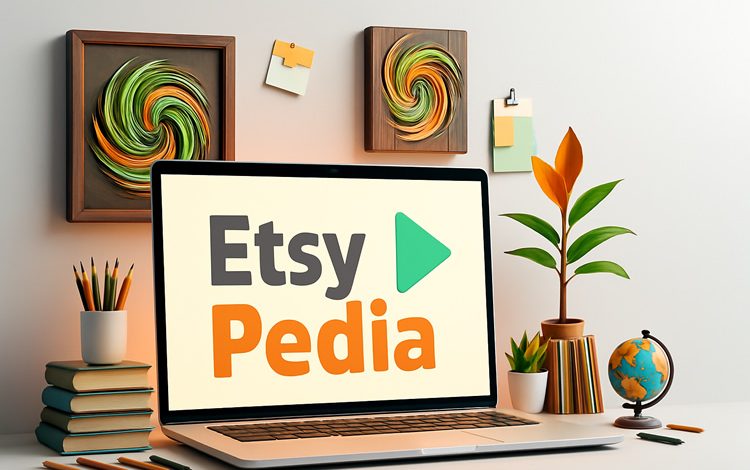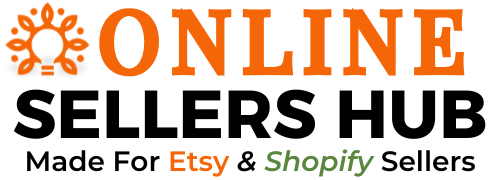What are the fees for selling on Etsy?

Etsy Pedia: What are the fees for selling on Etsy?
Feeling overwhelmed by the thought of Etsy fees? You’re not alone! Many Etsy sellers, from seasoned pros to those just starting out, wonder how to best navigate the financial landscape of this bustling online marketplace. Understanding Etsy’s fee structure is crucial for profitability and strategic business growth. This comprehensive guide breaks down exactly what you can expect to pay when selling on Etsy, offering clarity and empowering you to make informed decisions.
TL;DR: Unlocking Etsy’s Fee Secrets
Selling on Etsy involves a few core fees, but understanding them is your key to unlocking profitability. Beyond the obvious listing and transaction fees, there are optional advertising costs and potential renewal charges. Ready to dive deeper and uncover how to strategically manage these costs, perhaps even saving money with our Etsy Store Audit Service? Keep reading, and we’ll demystify every charge, helping you price your products for maximum profit and growth.
Table of Contents
Introduction: Navigating the Cost of Selling on Etsy
As an Etsy seller, your passion for creating unique products is what drives your business. However, to turn that passion into a sustainable income, a clear understanding of the platform’s financial mechanics is essential. Etsy, while offering a fantastic marketplace for handmade, vintage, and craft supplies, does have a fee structure in place. Knowing what these fees are, why they exist, and how to account for them in your pricing strategy can be the difference between a hobby that costs you money and a thriving online business.
This article will serve as your ultimate guide to Etsy fees. We’ll dissect each type of charge, explain how it impacts your bottom line, and offer practical tips to help you manage them effectively. By the end, you’ll feel confident in your ability to price your items strategically and understand your Etsy statements with ease.
The Core Etsy Fees: What You Absolutely Need to Know
These are the fundamental costs associated with listing and selling products on Etsy. They are non-negotiable and form the backbone of Etsy’s revenue model for supporting the platform.
Listing Fees: The Entry Ticket
New Seller? Click To Get 40 listings For FREE
Every time you list an item on Etsy, you’ll incur a small listing fee. This fee is charged regardless of whether the item sells.
-
- Cost: $0.20 USD per listing.
-
- Duration: Each listing is active for four months or until it sells, whichever comes first.
-
- Automatic Renewals: If an item sells and you have automatic renewals enabled, it will be automatically relisted and you’ll be charged another $0.20. This also applies if a listing expires and you haven’t manually renewed it.
Why This Matters: While seemingly small, these fees add up, especially if you have a large inventory or items that don’t sell quickly. It’s crucial to factor this into your cost of goods sold.
Pro Tip: Regularly review your active listings and consider removing items that haven’t sold in a long time to avoid unnecessary renewal fees. You can also turn off automatic renewals for individual listings.
Key Takeaways:
-
- $0.20 fee per listing.
-
- Valid for 4 months or until sold.
-
- Auto-renewals incur an additional fee.
Transaction Fees: The Percentage Game
This is Etsy’s primary revenue stream from your sales. When an item sells, Etsy takes a percentage of the total sale price, including shipping and gift wrapping.
-
- Cost: 6.5% of the total order amount (item price + shipping + gift wrap).
-
- Applies to: The entire order total.
Why This Matters: This is a significant cost that directly impacts your profit margin on each sale. Understanding this percentage is vital for accurate pricing. If your product costs $10 and you want a $5 profit, you need to account for this fee when setting your price.
Pro Tip: Consider using our “How to Sell on Etsy” Full Guide to learn advanced pricing strategies that factor in all associated fees.
Key Takeaways:
-
- 6.5% of the total order value.
-
- Includes item price, shipping, and gift wrap.
-
- Directly impacts profit margins.
Payment Processing Fees: Getting Paid
Etsy facilitates payments through Etsy Payments, its integrated payment system. This system charges a fee for processing customer payments.
-
- Cost: Varies by country. For U.S. sellers, it’s typically 3% + $0.25 USD per transaction.
-
- Applies to: Each transaction processed through Etsy Payments.
Why This Matters: This fee ensures you receive payments securely and efficiently. It’s important to note that this fee is separate from the transaction fee.
Pro Tip: Always check Etsy’s official help pages for the most up-to-date payment processing fees for your specific country, as they can change. Etsy Help Center: Fees and Payments
Key Takeaways:
-
- A small percentage plus a flat fee per transaction.
-
- Varies by country.
-
- Secures payment processing.
Optional Fees: Boosting Your Visibility and Reach
While not mandatory, these fees can help you attract more customers and increase sales.
Etsy Ads: Reaching More Buyers
Etsy Ads allow you to promote your listings directly within Etsy’s search results and on other Etsy pages. You set a daily budget, giving you control over your spending.
-
- Cost: You set your daily budget. Ads are charged on a cost-per-click (CPC) basis.
-
- Effectiveness: Can increase visibility and drive traffic to your shop.
Why This Matters: If you’re looking to get more eyes on your products, Etsy Ads can be a powerful tool. However, it’s essential to track your return on ad spend (ROAS) to ensure it’s profitable.
Pro Tip: Start with a small daily budget and monitor your ad performance closely. Optimize your listings with strong keywords and high-quality photos to maximize the effectiveness of your ad spend. Our Premium SEO Guide can help you identify those crucial keywords.
Key Takeaways:
-
- Pay-per-click advertising within Etsy.
-
- Set your own daily budget.
-
- Can boost visibility but requires ROI tracking.
Etsy Offsite Ads: Etsy’s Marketing Muscle
Etsy advertises your products on external sites like Google, Facebook, Instagram, Pinterest, and more. You only pay a fee if a customer clicks on one of these ads and makes a purchase within 30 days.
-
- Cost: 12% to 15% of the order total, depending on your shop’s sales volume over the past 365 days.
-
- Mandatory for some: If you earn over $10,000 USD in a 12-month period, Offsite Ads are mandatory.
-
- Optional for others: Shops earning less than $10,000 USD can opt out.
Why This Matters: Offsite Ads can bring in sales from customers you might not have reached otherwise. However, the fee is higher than other Etsy fees, so it’s crucial to understand when it applies and how it impacts your profitability.
Pro Tip: If you’re in the mandatory tier, ensure your pricing accounts for this potentially higher fee. If you’re in the optional tier, weigh the potential for increased sales against the higher fee. For insights into driving traffic without relying solely on ads, explore our articles on Organic Promotion on Etsy.
Key Takeaways:
-
- Etsy advertises your products off-platform.
-
- Fee charged only on completed sales via the ad.
-
- Fee structure varies based on annual sales.
Other Potential Fees: Keep These in Mind
These are less common but still important to be aware of.
Auto-Renewals
As mentioned under listing fees, if you have auto-renewals enabled for listings or Etsy Ads, you will be charged automatically when these conditions are met.
Why This Matters: Unchecked auto-renewals can lead to unexpected charges, especially if you’ve forgotten to update your listing status or ad budget.
Pro Tip: Regularly check your billing section in your Etsy dashboard to manage your auto-renewal settings and review recent charges.
Currency Conversion Fees
If you list your items in a different currency than your bank account or if a customer pays in a currency different from your listing currency, Etsy may charge a currency conversion fee.
-
- Cost: Varies, typically around 2.5% to 4%.
Why This Matters: This can slightly reduce your profit on international sales or if you’re not actively managing your shop’s currency settings.
Pro Tip: If you primarily sell to customers in a specific region, consider listing your prices in that region’s currency to minimize conversion fees.
Etsy Pattern Fees (If Applicable)
If you choose to build your own website using Etsy Pattern, there are separate monthly subscription fees associated with that service.
-
- Cost: Typically around $15 USD per month.
Why This Matters: This is an additional cost if you’re expanding your brand beyond the Etsy marketplace.
Decoding Your Etsy Bill: Where to Find the Details
Etsy provides a detailed breakdown of all your fees. You can access this information in your Etsy shop’s dashboard.
-
- Log in to your Etsy account.
-
- Navigate to your Shop Manager.
-
- Click on “Finances.”
-
- Select “Billing.”
Here, you’ll see a summary of your fees, charges, and payments. You can also view individual statements for specific periods.
Why This Matters: Regular review of your billing statement is crucial for financial health. It helps you identify trends, understand your actual profit per item, and catch any potential discrepancies.
Pro Tip: For a deeper understanding of your shop’s financial performance and to identify areas for improvement, consider an Etsy Store Audit Service.
Strategies for Managing Etsy Fees
Understanding the fees is the first step. The next is implementing strategies to mitigate their impact.
Smart Pricing for Profitability
This is arguably the most critical strategy. Your pricing must cover:
-
- Cost of materials/products
-
- Your time and labor
-
- All Etsy fees (listing, transaction, processing)
-
- Shipping costs (if not passed directly to the buyer)
-
- Desired profit margin
Why This Matters: Underpricing your items means you’re essentially paying Etsy to sell your products at a loss. Overpricing can deter buyers. Finding the sweet spot is key.
Pro Tip: Use our Etsy Listing Mockup Templates Bundle to visually present your products professionally, justifying your pricing and attracting buyers who value quality.
Optimizing Your Listings for Success
The better your listings perform organically, the less you might need to rely on paid advertising. This includes:
-
- Strong SEO: Using relevant keywords in titles, tags, and descriptions.
-
- High-Quality Photos/Videos: Compelling visuals increase click-through rates and conversions.
-
- Clear Descriptions: Providing all necessary information to answer buyer questions upfront.
Why This Matters: When your listings rank higher in Etsy search, you get more organic views and sales, reducing reliance on costly advertising. Check out our “Etsy Organic Traffic with Pinterest” Guide for external traffic strategies.
Leveraging Free Resources and Tools
Etsy itself offers many free resources, and there are fantastic external tools available.
-
- Etsy Seller Handbook: Packed with advice on all aspects of selling.
-
- Community Forums: Connect with other sellers for tips and support.
-
- Free Design Resources: Tools like Canva can help you create stunning shop banners and listing graphics. Access free fonts and graphics on Creative Fabrica for your digital products.
Why This Matters: Utilizing these resources can help you improve your shop without incurring additional costs.
Frequently Asked Questions about Etsy Fees
Q1: Do I have to pay fees if my item doesn’t sell?
A1: Yes, you pay a listing fee ($0.20 USD) when you initially list an item and each time it renews (either automatically or manually). However, you do not pay transaction or payment processing fees for unsold items.
Q2: How does Etsy calculate the transaction fee?
A2: The transaction fee is 6.5% of the total sale price, which includes the price of the item, shipping costs, and any gift wrapping charges. It is calculated on the total amount the buyer pays you.
Q3: Can I avoid Etsy’s Offsite Ads fees?
A3: If your shop earned less than $10,000 USD in the last 365 days, you can choose to opt out of Offsite Ads. If you meet or exceed that sales threshold, Offsite Ads are mandatory.
Q4: How can I see a breakdown of all the fees I’ve paid on Etsy?
A4: You can view a detailed breakdown of all your Etsy fees by navigating to your Shop Manager > Finances > Billing.
Conclusion: Mastering Your Etsy Finances
Understanding Etsy’s fee structure is not a barrier to success, but rather a roadmap to it. By carefully dissecting each fee, incorporating them into your pricing strategy, and leveraging available tools and resources, you can ensure profitability and sustainable growth for your Etsy shop.
Remember, knowledge is power. The more you understand about how Etsy operates financially, the better equipped you are to make smart business decisions.
What are your biggest challenges with Etsy fees? Share your thoughts and questions in the comments below!
Want to take your Etsy shop to the next level and master your finances and marketing? Explore our comprehensive range of resources at etsysellershub.com/categories. For sellers looking to build a strong foundation, our “Building a New Shop” category is a great starting point.


